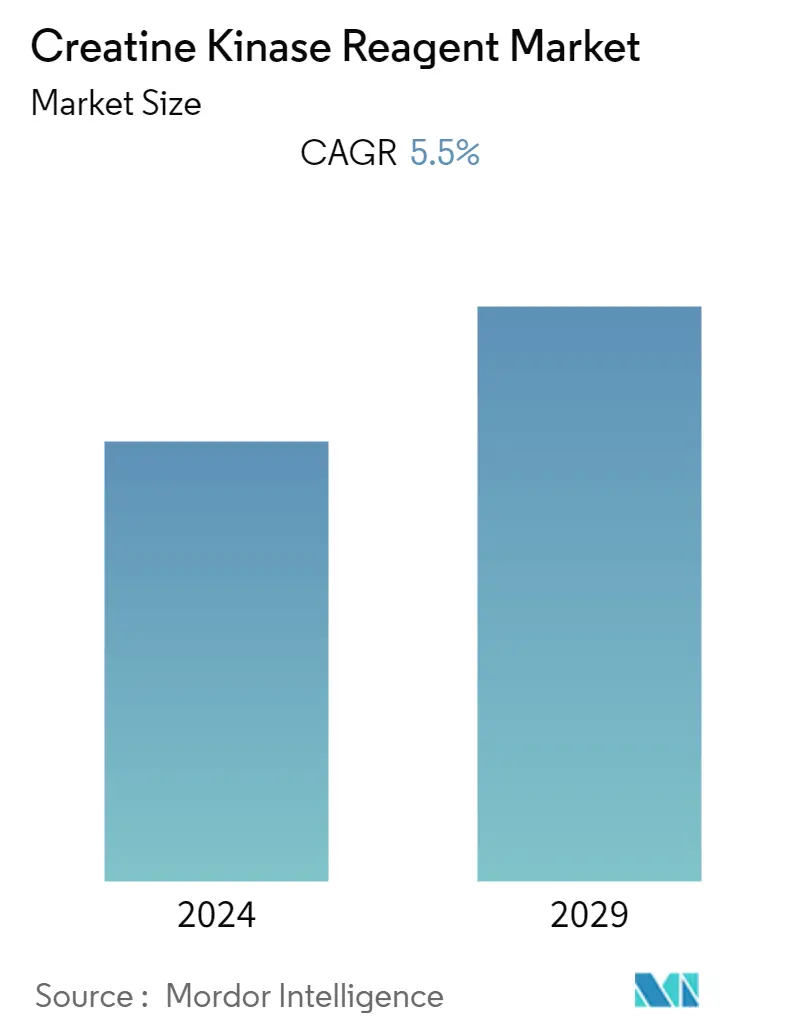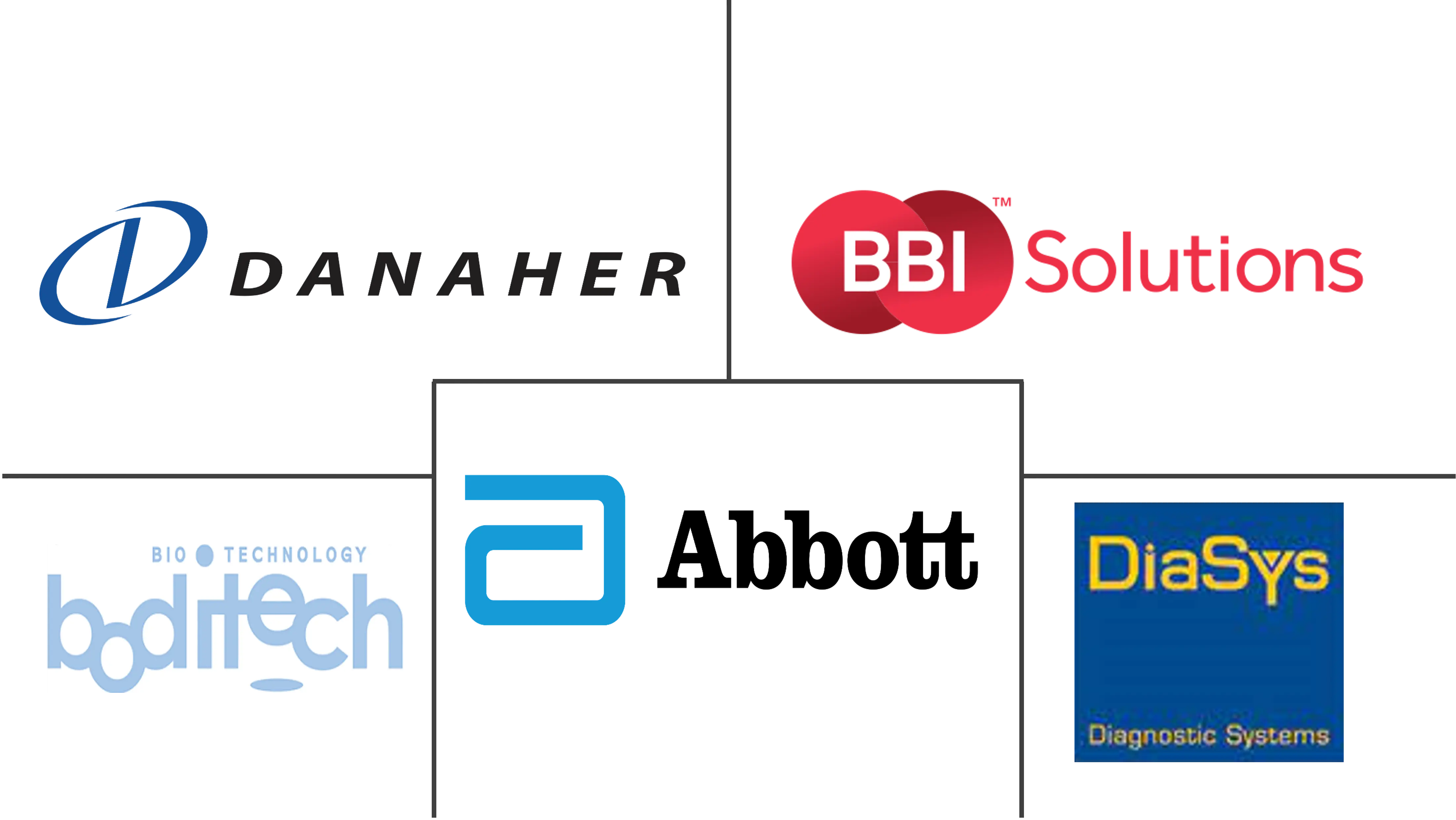Market Size of Creatine Kinase Reagent Industry

| Study Period | 2019 - 2029 |
| Base Year For Estimation | 2023 |
| CAGR | 5.50 % |
| Fastest Growing Market | Asia Pacific |
| Largest Market | North America |
| Market Concentration | Low |
Major Players
*Disclaimer: Major Players sorted in no particular order |
Need a report that reflects how COVID-19 has impacted this market and its growth?
Creatine Kinase Reagent Market Analysis
The creatine kinase reagent market is anticipated to register a CAGR of nearly 5.5% during the forecast period.
- The COVID-19 pandemic had a profound impact on the creatine kinase reagent market. For instance, as per the NLM's article published in May 2021, increased creatine kinase was reported in 9% - 33% of patients with COVID-19. Skeletal muscle injury and myopathies in COVID-19 were associated with increased neutrophils, lymphopenia, C-reactive protein (CRP), increased D-dimer levels, length of ICU stay, and more severe disease.
- Myositis, a subset of myopathy due to inflammation of muscle fibers, has also been reported in patients with COVID-19 in association with elevated creatine kinase values. This, in association with findings of elevated inflammatory cytokines, has led to the hypothesis that COVID-19-induced myopathy may result from the inflammatory cascade. Hence, the pandemic had a negligible impact on the creatine kinase reagent market.
- In addition, the increasing prevalence of cardiovascular diseases and muscular injuries and diseases are actively affecting the growth of the studied market. For instance, according to the World Health Organization (WHO) June 2021 report, cardiovascular disease, which caused an estimated 17.9 million fatalities and 32% of all deaths globally in 2020, is the most common type of chronic disease.
- Also, according to the Australian Bureau of Statistics, an estimated 571,000 Australians aged 18 and over (2.9% of the adult population) had chronic heart diseases in 2021. Hence, the country's high burden of cardiovascular diseases is projected to boost the market growth.
- Furthermore, an article published in Neuroepidemiology Journal in July 2021 stated that combined prevalence rates (per 100,000 people) and incidence rates (per 100,000 person-years) for amyotrophic lateral sclerosis (ALS) were 6.22 and 2.31 for Europe, 5.20 and 2.35 for North America, 3.41 and 1.25 for Latin America, 3.01 and 0.93 for Asian countries excluding Japan, and 7.96 and 1.76 for Japan respectively in 2021.
- Since creatine kinase is used as a marker of muscle damage and is significantly elevated in people with ALS, it is widely used in diagnosing this neurological disease. Hence, the high burden of ALS is projected to boost market growth during the forecast period.
- However, the global market for creatine kinase reagents may be constrained by the strict regulatory frameworks for qualification processes that evaluate companion diagnostics of creatine kinase.
